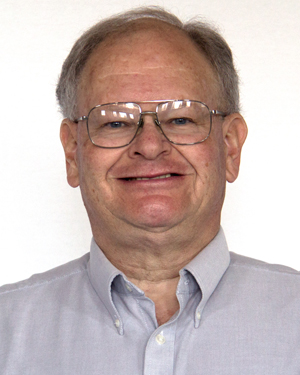Bill Drury - Department of Environmental Engineering
 Professor Emeritus
Professor Emeritus
The small stream that flows through the village were Bill Drury grew up was both playground and classroom for him. This introduction to aquatic environments started Bill toward a career in the study and protection of such environments. He has specialized in water and wastewater treatment so that he can protect surface waters from pollution. He asks that we all try to make the Earth a better place.
Education
Ph.D. Civil Engineering—Montana State University December 1992.
M.S. Environmental Health Engineering—North-western University August 1979.
B.S. Civil Engineering—Marquette University May 1978.
Positions Held
Professor 2000-2017
Associate Professor 1995-1998
Assistant Professor 1992-1995
Courses Taught
-
Bioremediation Engineering--ENVE 5390
-
Hazardous Waste Engineering—ENVE 4290
-
Water and Wastewater Treatment—ENVE 4030
Research
Bill Drury’s research projects at Montana Tech have investigated passive biological systems for treating mine drainage containing metals and acid. These systems can be enclosed in a reactor, or a sub-surface flow wetland can be used to generate the same reactions. Bacteria utilize solid organic matter like compost or plant litter as electron donors. Sulfate reducing bacteria use sulfate in the mine water as their terminal electron acceptor, producing hydrogen sulfide that is a good precipitant for most of the metals in the water. Bicarbonate alkalinity is also generated that neutralized the acid.
Specifically, the research has measured the kinetics of sulfide production and metals removal, and the hydraulic characteristics of treatment wetlands.
Papers
Heavy Metal Attenuation
Hydraulic Characteristics
Mine Drainage
Modeling of Sulfate Reduction
Publications
Drury, W.J. (2001) Empirical Modeling of Zinc Removal in Pilot-Scale Subsurface Flow Wetlands. Soc. of Environ. Toxicol. Chem. Ann. Mtg., Baltimore, MD November 2001.
Drury, W.J. (2001) Empirical Modeling of Zinc Removal in Pilot-Scale Subsurface Flow Wetlands. Pacific NW International Section AWMA, Big Sky, MT December 2001.
Drury, W.J. (2000). Modeling of Sulfate Reduction in Anaerobic Solid Substrate Bioreactors for Mine Drainage Treatment. Mine Water and the Environment. 19 (1), 18-28.
Drury, W.J. (1999) Treatment of Acid Mine Drainage with Anaerobic Solid Substrate Reactors. Wat. Environ. Res. 71, 1244-1250.
Gammons, C.H., W.J. Drury and Y. Li. (2000). Seasonal Influences on Heavy Metal Attenuation in an Anaerobic Treatment Wetland, Butte, Montana. Fifth International Conf. On Acid Rock Drainage, Denver, CO. May 21-24, 2000 SME, Littleton, CO.
Drury, W.J. and K. Mainzhausen. (2000). Hydraulic Characteristics of Subsurface Flow Wetlands. 2000 Billings Land Reclamation Symposium. Billings, MT March 20-24, 2000.
Mueller, R.F., W. Drury, F. Diebold, and W. Chatham. “Treatment of Metal Containing Ground and Surface Water in Passive Systems.” 1997 National Meeting of the American Society for Surface Mining and Reclamation, Austin, TX May, 1997.
Mueller, R.F., D.E. Sinkbeil, J. Pantano, W. Drury, F. Diebold, W. Chatham, J. Jonas, D. Pawluk, M. Thompson, and J. Figueira. “Treatment of Metal Contaminated Groundwater in Passive Systems: A Demonstration Study.” 1996 National Meeting of the American Society for Surface Mining and Reclamation, Knoxville, TN May, 1996.
Scientific and Professional Societies
Water Environment Federation Association of Environmental Engineering Professors